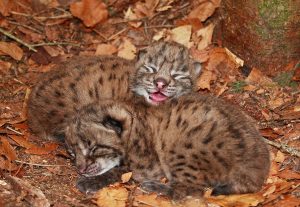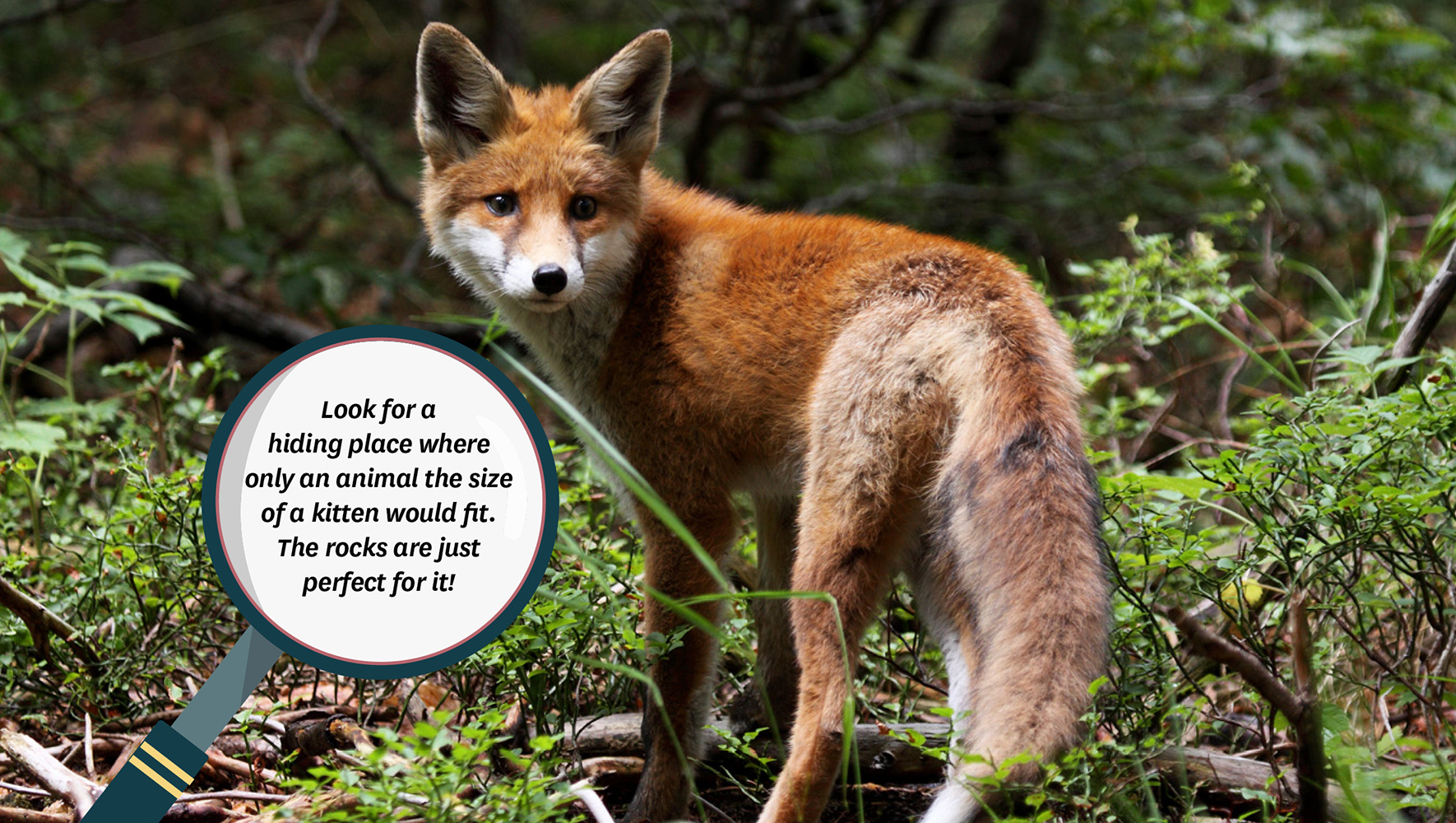Like other large carnivores, lynx have just a few offspring and even less survive the first year – often just one or two. The quality of den sites may be one of the first important factors affecting survival, so a female has to choose carefully where to give birth.

Puhi and Burja, cubs of a female lynx called Dina who was collared in 2007, author: Miha Krofel
Kittens are born with their eyes closed, nearly deaf, immobile, and unable to regulate their own body temperature yet. This makes them dependent on their mother for warmth and food.
In captivity, it has been observed that the female will not come out of the den to feed until a couple of days after birth. She nurses her young for three to five months, but they begin to eat solid food at one month of age. At six weeks old, the cubs begin to follow the mother on short trips.
The females move the kittens from one den to another regularly, keeping to short distances within 500m.
Frequent changing of dens may reduce the risk of being detected by potential predators, such as martens, foxes, avian predators, and wild cats, or disturbed by humans. Other reasons for changing dens include flooding, changes in temperature, food remains, ectoparasites, or lack of prey.

A fox (Vulpes vulpes) – potential predator of lynx cubs, author: Miha Krofel
Dens must shelter kittens from the weather, getting wet or direct sun. Most dens are closed structures, and they very often have a terrace that serves as a resting place and lookout. Dens used after birth have many additional hiding spots around them that help kittens to hide quickly.
They are typically located at steep slopes among rocks or in caves with a surface of approximately 1m2 and wooden surroundings.
When kittens are born, they are a drab sand color with almost no black spots. After nine weeks, their fur changes to a reddish color which is more or less spotted. The pattern enables them to camouflage and move around without being noticed.
